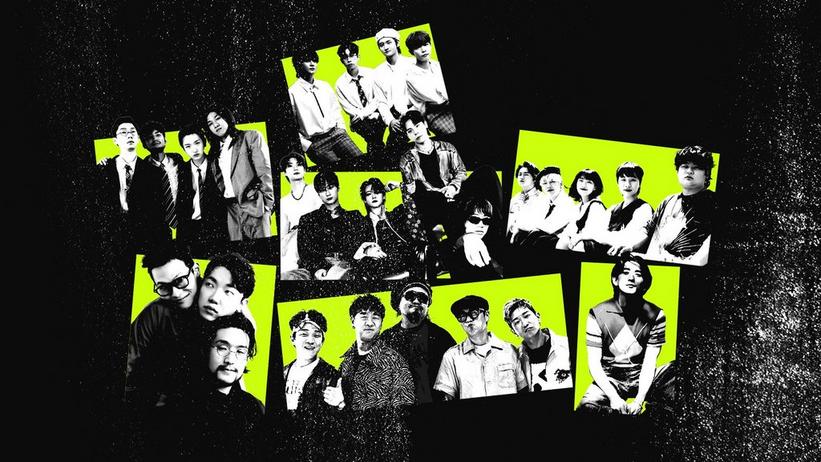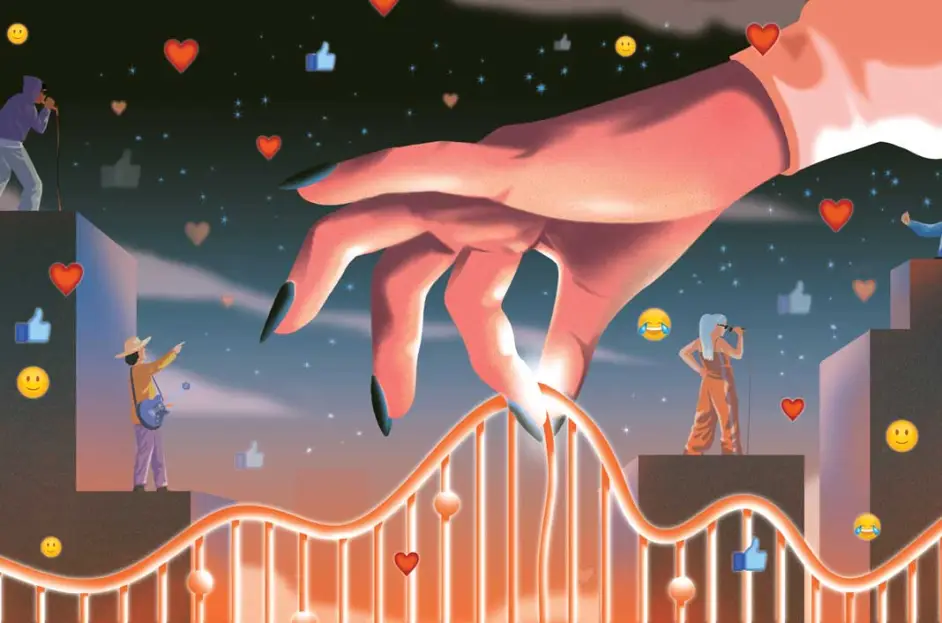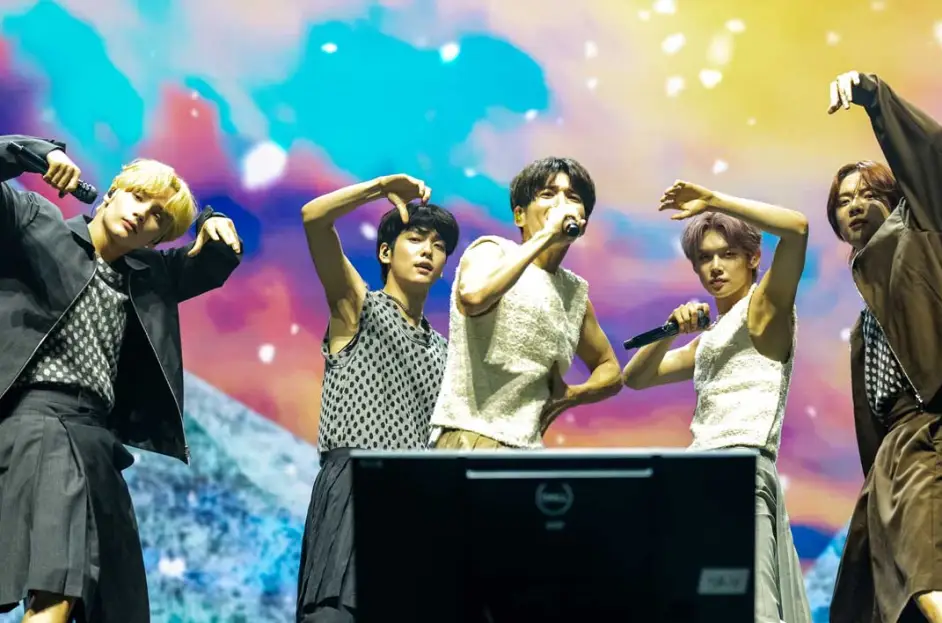
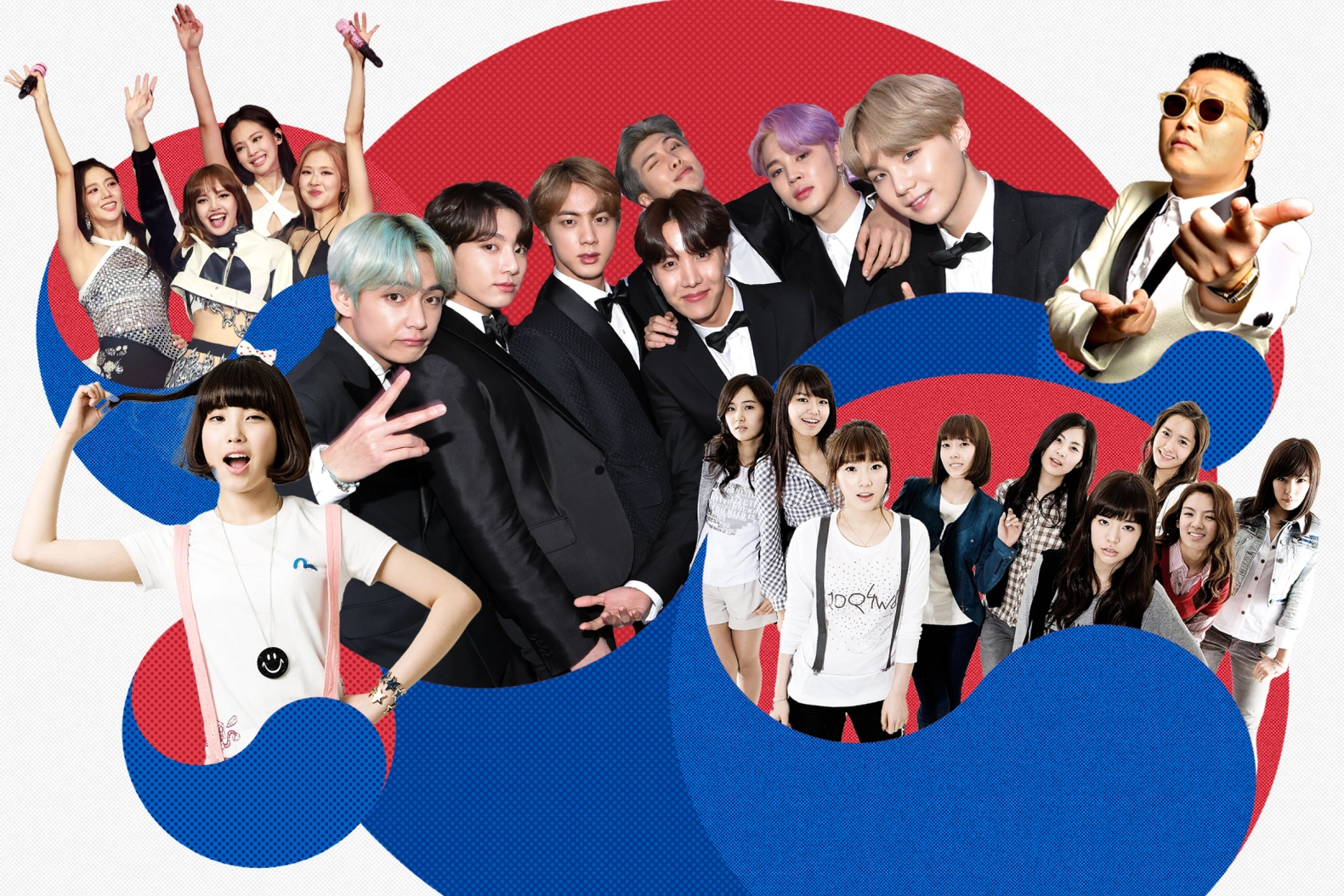 Photo illustration by Griffin Lotz. Photographs in illustration by Emma McIntyre/Getty Images; John Shearer/Getty Images; Ten Asia/Multi-Bits/Getty Images, 2; Marco Del Grande/The Sydney Morning Herald/Fairfax Media/Getty ImagesBTS, Blackpink, NewJeans, and many more.
Photo illustration by Griffin Lotz. Photographs in illustration by Emma McIntyre/Getty Images; John Shearer/Getty Images; Ten Asia/Multi-Bits/Getty Images, 2; Marco Del Grande/The Sydney Morning Herald/Fairfax Media/Getty ImagesBTS, Blackpink, NewJeans, and many more.
The birth of modern K-pop is often dated to 1992, when Seo Taiji and Boys, a dance-oriented trio led by an ex-metalhead, performed their song “I Know” on the South Korean network MBC. Not only did the group’s original blend of Korean ballad melodies with New Jack Swing, rap, and dance music shock the general public, but their dancing and aesthetic, heavily inspired by Black American trends of the time, appealed to a generation of young people eager to embrace contemporary Western culture.
Thus was born a multi-billion-dollar industry, now embraced globally across generations and cultures. K-pop’s enormous success is still predominantly fueled by the enthusiasm of teens and young adults, passionate devotees who look to their idols for belonging and inspiration. Though K-pop boldly mashes together genres from all over the world (sparking its fair share of conversations about the ethics of appropriation), it has still maintained its distinctly Korean ethos. It’s a culture that values the collective, looks toward innovation, and is highly attuned to emotions — resulting in cutting-edge songs and performances that explode with feeling, yet are accessible to a mass audience.
What truly binds the industry now is its perfection-honing training system and emphasis on highly conceptual multimedia storytelling. That industry has birthed two of the world’s most influential and bestselling artists today, BTS and Blackpink, and its powerhouse labels (like Hybe, SM, and YG) have proved remarkably consistent in creating new stars. Yet as more artists of non-Korean citizenship and ancestry have risen as “K-pop” stars in recent years, the label is being questioned by some critics and fans who see it as a tool to pigeonhole artists from being recognized on a broader scale. Even BTS leader RM told Rolling Stone in his May 2021 cover story that he sees the group as existing outside of K-pop: “Our genre is just BTS,” he said. “That debate [between whether BTS is K-pop or pop] is very important for the music industry, but it doesn’t mean very much for us members.”
Long before these Hallyu stars, plenty of homegrown artists paved the way for K-pop’s popularity and eclecticism. Our list of 100 Greatest Songs in the History of Korean Pop Music was led by Rolling Stone contributor Michelle Hyun Kim and crafted by a panel of music journalists and critics, both based in South Korea and the United States, who have been writing about Korean music for years. After an initial ballot vote and series of heated debates, we arrived at a list that looked beyond the strict definition of K-pop as a hitmaking business in order to tell the broader history of Korean popular music.
The earliest entry on the list dates back to the 1920s, an era when recordings captured burgeoning artists living under Japanese occupation singing Korean lyrics atop songs from Europe or Japan. From there, the list spotlights artists throughout the 20th century who were the “idols” of their day, making folk protest anthems, ballads of mourning and change, as well as trot — a form of Korean popular music that derives from traditional Korean music, Japanese enka, and American and European ballads.
Elsewhere, there are trailblazing experimentalists and indie crossover artists whose early adoption of funk, pop, soul, and rock helped establish mainstream familiarity with those sounds. Then, the story catches up with K-pop proper in the Nineties, as we celebrate the biggest and most ingenious hits that were either musically groundbreaking, or influential to how K-pop is marketed and consumed.
What follows is not only the story of Korean popular music, and how it birthed the K-pop business, but also how a small peninsula nation learned how to make art in the face of colonialism and political change, culled sonics from all corners of the globe, and keeps striving to find new ways of distilling the purest, most thrilling aspects of the human experience into four-minute packages of pop revelation.
Hear this playlist on Spotify.
#55 DJ DOC 'Run to You'
2000
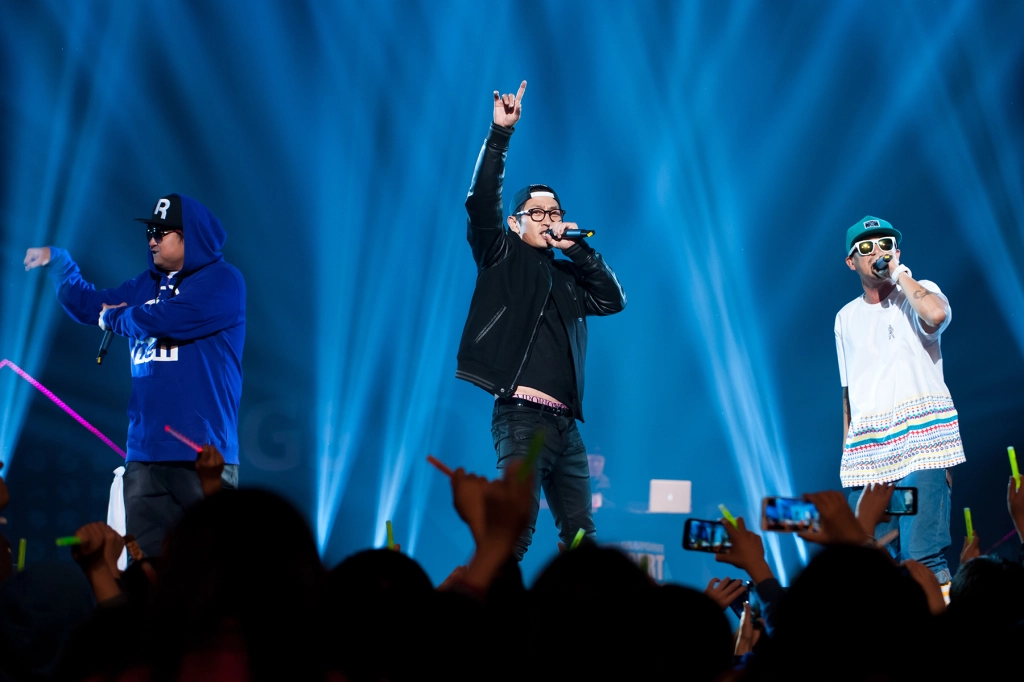 Choi Soo-Young/Multi-Bits/Getty ImagesIn the Nineties, DJ Doc was essential to the development of Korean hip-hop, frequently fighting airplay bans for decrying social injustice and censorship in the entertainment industry. Still active today, the trio defined the sound of the Y2K era with their funky party anthems, especially the Boney M.-sampling “Run to You.” Part euphemistic love call, part quick-fire rap rejoinder, “Run to You” has become a timeless hit, iconic for its come-hither “Bounce! Bounce! Bounce!“ shout-out section — that’s become a must at noraebang karaoke. —T.H.
Choi Soo-Young/Multi-Bits/Getty ImagesIn the Nineties, DJ Doc was essential to the development of Korean hip-hop, frequently fighting airplay bans for decrying social injustice and censorship in the entertainment industry. Still active today, the trio defined the sound of the Y2K era with their funky party anthems, especially the Boney M.-sampling “Run to You.” Part euphemistic love call, part quick-fire rap rejoinder, “Run to You” has become a timeless hit, iconic for its come-hither “Bounce! Bounce! Bounce!“ shout-out section — that’s become a must at noraebang karaoke. —T.H.
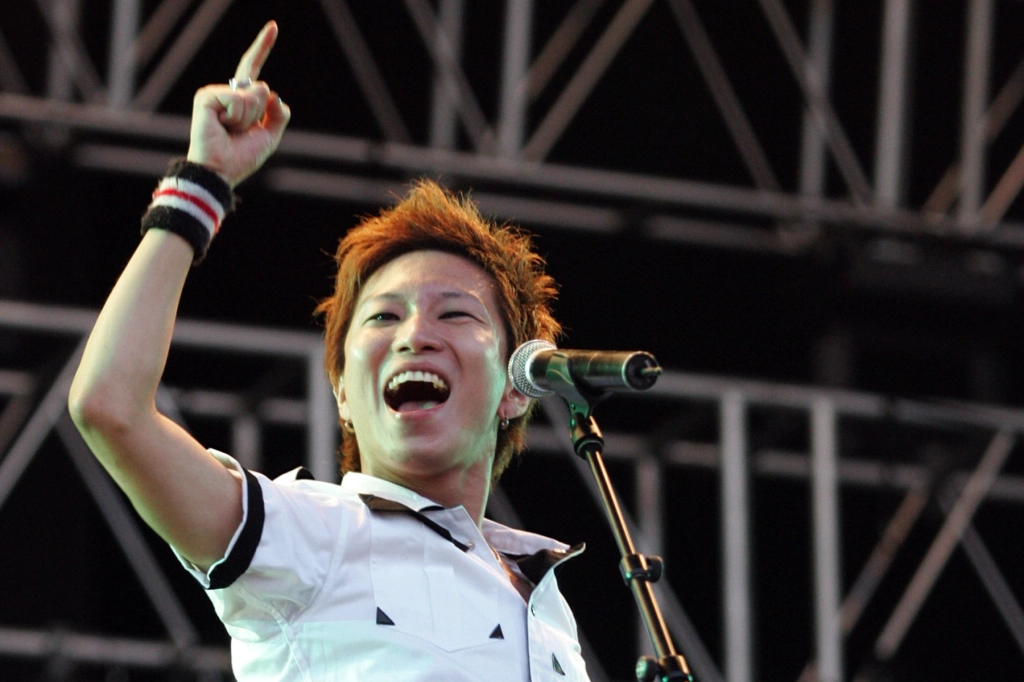 Chung Sung-Jun/Getty ImagesPioneers of their self-coined strain of Korean punk called “Chosun punk,” Crying Nut inspired generations of future bands with their 1998 debut album, Speed Up Losers, which sold more than 100,000 copies that year — then an unimaginable feat for an underground group. The title song builds up with jangly chords and rollicking drums before launching into a hortatory anthem about riding horses. Such nonsense lyrics would become their trademark in hits like 2006’s “Luxembourg” and 2009’s “Pigeon,” proving that absurdity and pugnaciousness could cross over in the Korean mainstream. —J.G.
Chung Sung-Jun/Getty ImagesPioneers of their self-coined strain of Korean punk called “Chosun punk,” Crying Nut inspired generations of future bands with their 1998 debut album, Speed Up Losers, which sold more than 100,000 copies that year — then an unimaginable feat for an underground group. The title song builds up with jangly chords and rollicking drums before launching into a hortatory anthem about riding horses. Such nonsense lyrics would become their trademark in hits like 2006’s “Luxembourg” and 2009’s “Pigeon,” proving that absurdity and pugnaciousness could cross over in the Korean mainstream. —J.G.
https://www.rollingstone.com/music/music-lists
By Rolling Stone
Featured Artists : DJ DOC / Crying Nut
 Friday, November 10, 2023 at 5:42AM |
Friday, November 10, 2023 at 5:42AM |  DFSB Kollective
DFSB Kollective 


